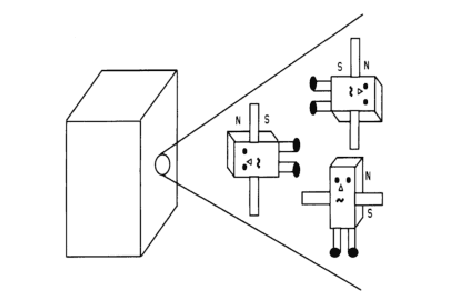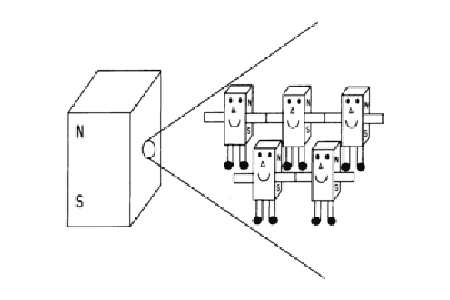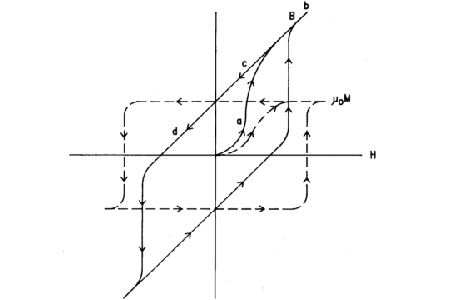How a permanent magnet works
To explain the workings of a permanent magnet, we need to look inside on an atomic scale. Each atom has a set of spinning electrons, which together act to form a magnetic moment. For our purposes, we can consider each atom to act like a small bar magnet. When the permanent magnet is demagnetized (either by heating it to a high temperature or cycling it in a magnetic field) each atomic moment points at random (see Fig. 1) and no net force is observed.
When the permanent magnet is magnetized in a strong magnetic field, all the atomic moments are aligned to the same direction and once there, are held in ‘lock-step’ with each other (Fig. 2). The ‘lock-step’ allows the magnet to retain its magnetism on removal from the magnetic field and also resists the effect of a field applied in the reverse direction. The strength of this ‘lock-step’ is the coercive force of the magnet. More on this later.
The atomic moments add up to produce a total magnetic moment for the permanent magnet, and the magnetization M is the total magnetic moment per unit volume. The magnetic flux density B seen within the magnet is the result of the driving force of the externally applied magnetic force H and that resulting from the internal magnetization M. On an area-independent basis, the flux density B in the magnet is given by:
B = µ0 (H+M)
Here, µ0 is an arithmetical constant and we have neglected shape-dependent demagnetization effects which may occur.
Starting from an unmagnetized magnet, as H is increased from zero, its effect is to align the atomic moments and give rise to a rapid increase in M. Thus the flux density B follows a path such as ‘a’ in Fig. 3.
As all the atomic moments are aligned, M comes to its saturation value and any further increase in B is then due solely to the applied field alone (region b of Fig 3.) As the applied field is reduced to zero, B does not follow its original path because of the ‘lock-step’ holding the atomic moments in the same direction.
So the flux density follows path c, which includes a constant contribution from the atomic moments. This time as H (the external field) nears zero, the flux density nears a value due to the atomic moments alone
Br = µ0 (0+Mr)
and the value of B at zero field is the remnant flux density. Now, as the direction of H is reversed, H and M act in opposite directions and the flux density is reduced (path d in Fig. 3).
The value of field at which B is reduced to zero is termed the coercive force of the magnet BHC. When the magnitude of the applied field is large enough to break the ‘lock-step’ the atomic moments fly around to align with the new field direction.
The value of field at which this occurs is called the intrinsic coercive force of the permanent magnet MHC. So, there are two different but related coercivities associated with a permanent magnet.
Fig. 1

Fig. 2

Fig. 3
